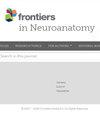Frontiers | A novel approach to cytoarchitectonics: developing an objective framework for the morphological analysis of the cerebral cortex
IF 2.3
4区 医学
Q1 ANATOMY & MORPHOLOGY
引用次数: 0
Abstract
IntroductionThe cytoarchitectonic boundaries between cortical regions and layers are usually defined by the presence or absence of certain cell types. However, these cell types are often not clearly defined and determining the exact boundaries of regions and layers can be challenging. Therefore, in our research, we attempted to define cortical regions and layers based on clear quantitative criteria.MethodsWe performed immunofluorescent anti-NeuN labelling on five adult human brains in three cortical regions—Brodmann areas (BA) 9, 14r, and 24. We reconstructed the cell bodies of 90,723 NeuN-positive cells and analyzed their morphometric characteristics by cortical region and layer. We used a supervised neural network prediction algorithm to classify the reconstructions into morphological cell types. We used the results of the prediction algorithm to determine the proportions of different cell types in BA9, BA14r and BA24.ResultsOur analysis revealed that the cytoarchitectonic descriptions of BA9, BA14r and BA24 were reflected in the morphometric measures and cell classifications obtained by the prediction algorithm. BA9 was characterized by the abundance of large pyramidal cells in layer III, BA14r was characterized by relatively smaller and more elongated cells compared to BA9, and BA24 was characterized by the presence of extremely elongated cells in layer V as well as relatively higher proportions of irregularly shaped cells.DiscussionThe results of the prediction model agreed well with the qualitative expected cytoarchitectonic descriptions. This suggests that supervised machine learning could aid in defining the morphological characteristics of the cerebral cortex.前沿 | 细胞建筑学的新方法:为大脑皮层形态学分析制定客观框架
导言皮层区域和层之间的细胞结构边界通常是由某些细胞类型的存在或不存在来定义的。然而,这些细胞类型往往没有明确的定义,因此确定区域和层的确切边界可能具有挑战性。因此,在我们的研究中,我们试图根据明确的定量标准来定义大脑皮层区域和层次。方法 我们对五个成年人大脑的三个皮层区域--布罗曼区域(BA)9、14r 和 24--进行了免疫荧光抗神经元标记。我们重建了 90,723 个 NeuN 阳性细胞的细胞体,并按皮质区域和层分析了它们的形态特征。我们使用一种有监督的神经网络预测算法将重建的细胞体划分为形态细胞类型。结果我们的分析表明,BA9、BA14r 和 BA24 的细胞结构描述反映在预测算法得到的形态计量和细胞分类中。BA9 的特征是在第 III 层有大量的大锥体细胞,BA14r 的特征是与 BA9 相比细胞相对较小且更细长,而 BA24 的特征是在第 V 层有极细长的细胞以及不规则形状细胞的比例相对较高。这表明有监督的机器学习可以帮助定义大脑皮层的形态特征。
本文章由计算机程序翻译,如有差异,请以英文原文为准。
求助全文
约1分钟内获得全文
求助全文
来源期刊

Frontiers in Neuroanatomy
ANATOMY & MORPHOLOGY-NEUROSCIENCES
CiteScore
4.70
自引率
3.40%
发文量
122
审稿时长
>12 weeks
期刊介绍:
Frontiers in Neuroanatomy publishes rigorously peer-reviewed research revealing important aspects of the anatomical organization of all nervous systems across all species. Specialty Chief Editor Javier DeFelipe at the Cajal Institute (CSIC) is supported by an outstanding Editorial Board of international experts. This multidisciplinary open-access journal is at the forefront of disseminating and communicating scientific knowledge and impactful discoveries to researchers, academics, clinicians and the public worldwide.
 求助内容:
求助内容: 应助结果提醒方式:
应助结果提醒方式:


